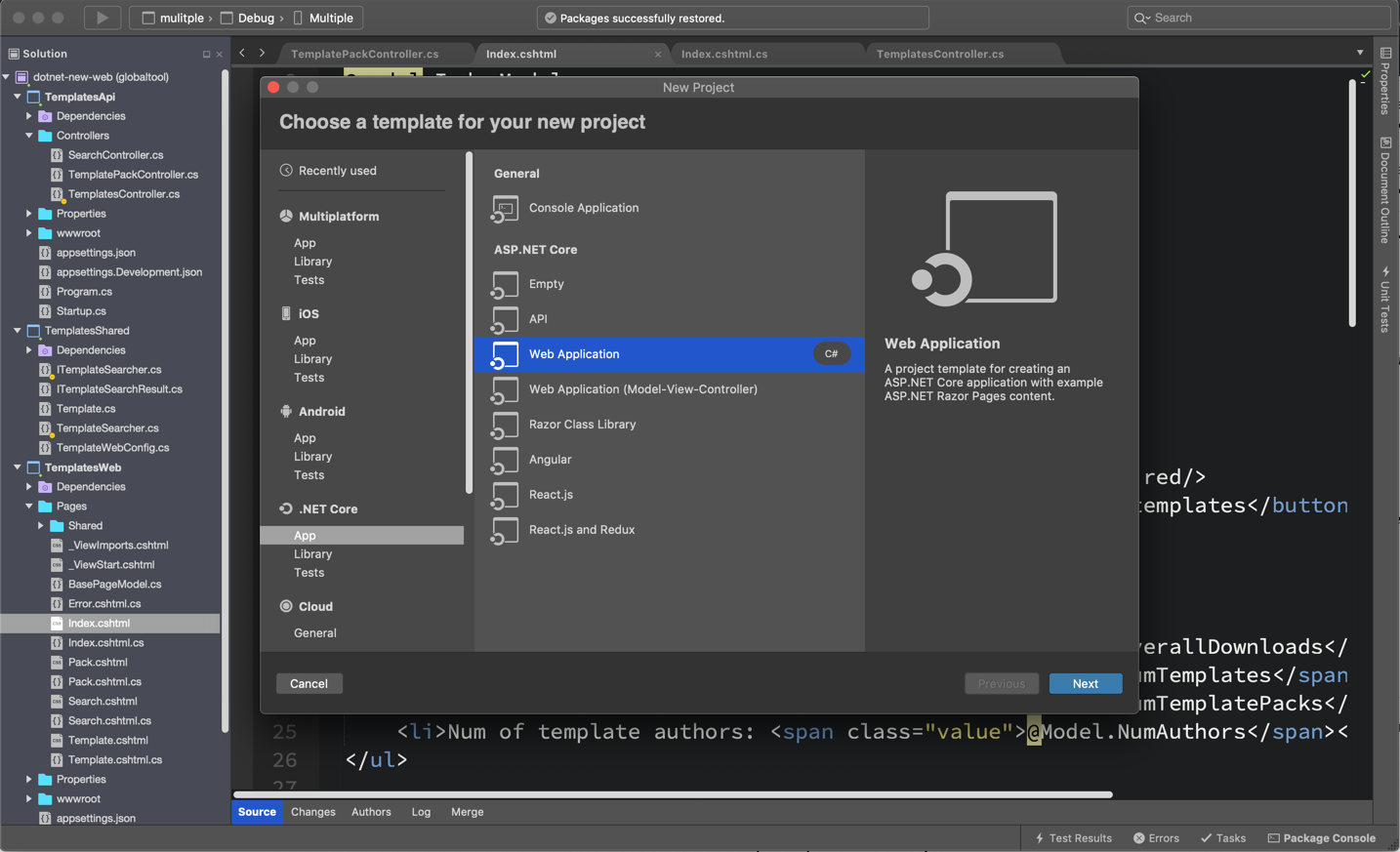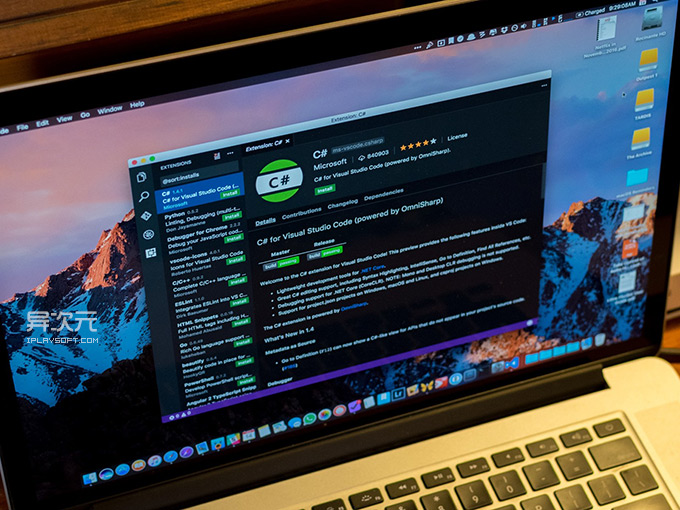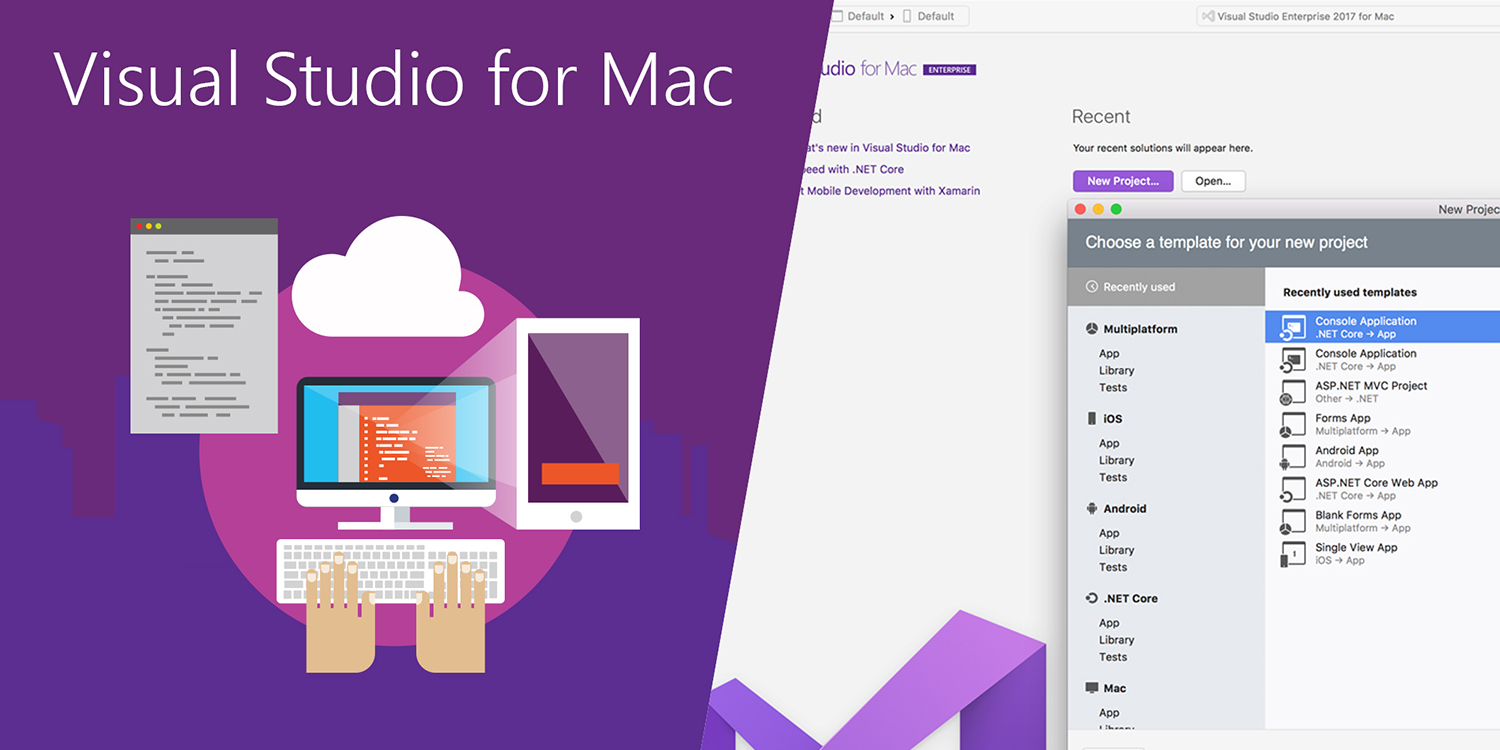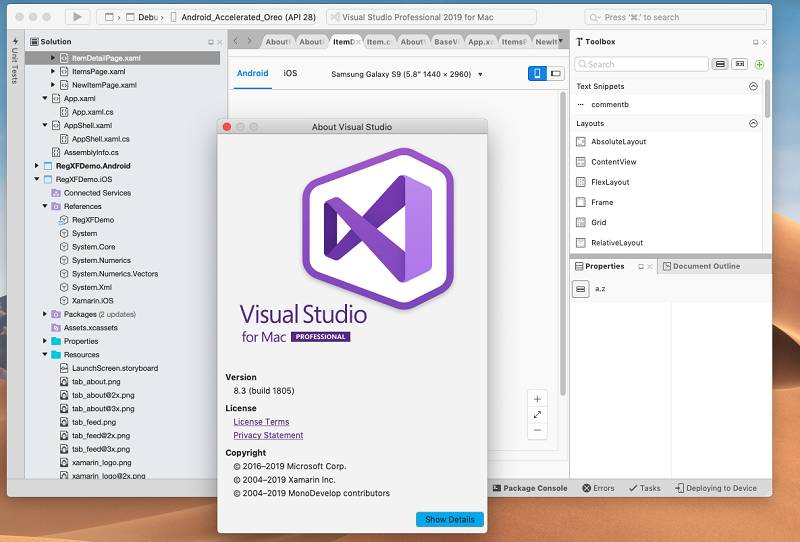The C# support in Visual Studio Code is optimized for cross-platform .NET Core development (see working with .NET Core and VS Code for another relevant article). Our focus with VS Code is to be a great editor for cross-platform C# development.
Developer Community for Visual Studio Product family. Everything related to the Visual Studio for Mac developer environment. I read that Visual Studio now supports cross-platform development.I'm using CMake to compile for Windows and Ubuntu (using WSL) so far.However there doesn't seem to be any information on how to actually accomplish the cross-compilation using Visual Studio to target Mac OS X. Using Visual Studio Code and Building and Debugging with C on Mac OS X Saturday, August 6th, 2016. By Michael Suodenjoki, August 2016. I wanted to play with and test Visual Studio Code's (VSCode) features for doing C development on the Mac platform. Visual Studio C For Mac Scope of Article All of the solutions provided can be used in the writing of the kinds of code beginners write: 20 to 50 lines of code that assist with the learning of C. Stdin and stdout are the focus. Visual Studio 2017 Mac Download. In this video I will show you How to install Visual Studio Code on Mac. VS Code runs on Mac, Linux, and Windows. See Requirements for the supported versions.
VS Code supports debugging of C# applications running on either .NET Core or Mono.
Visual Studio For Mac Review
For detailed instructions on:
- .NET Core debugging - see the Microsoft C# extension's GitHub page.
- Mono debugging - see the Mono Debug extension's README.
Note:VS Code has limited support for debugging applications running on the Desktop .NET Framework.
Due to this focus, many standard C# project types are not recognized by VS Code. An example of a non-supported project type is an ASP.NET MVC Application (though ASP.NET Core is supported). In these cases, if you want to have a lightweight tool to edit a file - VS Code has you covered. If you want the best possible experience for those projects and development on Windows in general, we recommend you use Visual Studio Community.
Installing C# support
C# language support is an optional install from the Marketplace. You can install it from within VS Code by searching for 'C#' in the Extensions view (⇧⌘X (Windows, Linux Ctrl+Shift+X)) or if you already have a project with C# files, VS Code will prompt you to install the extension as soon as you open a C# file.

In addition to the Microsoft C# extension, the community has produced other extensions.
Tip: The extensions shown above are dynamically queried. Click on an extension tile above to read the description and reviews to decide which extension is best for you. See more in the Marketplace.
Roslyn and OmniSharp
Visual Studio Code uses the power of Roslyn and OmniSharp to offer an enhanced C# experience. We offer support for:
- .NET Core projects
- MSBuild projects
- C# scripts (CSX)
On startup the best matching projects are loaded automatically but you can also choose your projects manually. The status bar will show what projects have been loaded and also allows you to select a different set of projects. To do so, click on the status bar projects item and select Change projects…. In the image below a single project has been picked up:
The available options include:

- Selecting a
project.jsonfile will open a .NET Core project and VS Code will load that project plus the referenced projects. - Selecting a
*.slnfile opens a MSBuild-project. It will load the referenced*.csprojprojects and sibling or descendantproject.jsonfiles but no other project files that are referenced from the solution file. - Selecting a
folderwill make VS Code scan for*.sln,project.jsonand*.csxfiles (C# scripts) and VS Code will attempt to load them all.
Once the project is loaded the enhanced experiences light up...
Editing Evolved
There is a lot to discover with C# and the editor, such as format on type, IntelliSense, the rename-refactoring, etc.
For a full description of our editing features, go to the Basic Editing and Code Navigation documentation.
Here are a few highlights...
IntelliSense
IntelliSense just works: hit ⌃Space (Windows, Linux Ctrl+Space) at any time to get context specific suggestions.
Snippets for C#
We have several built-in snippets included in VS Code that will come up as you type or you can press ⌃Space (Windows, Linux Ctrl+Space) (Trigger Suggest) and we will give you a context specific list of suggestions.
Tip: You can add in your own User Defined Snippets for C#. Take a look at User Defined Snippets to find out how.
Search for Symbols
There are also features outside the editor. One is the ability to search for symbols from wherever you are. Hit ⌘T (Windows, Linux Ctrl+T), start typing, and see a list of matching C# symbols. Select one and you'll be taken straight to its code location.
CodeLens
Another cool feature is the ability to see the number of references to a method directly above the method. Click on the reference info to see the references in the Peek view. This reference information updates as you type.
Note: Methods defined in object, such as equals and hashCode do not get reference information due to performance reasons.
Tip: You can turn off references information displayed in CodeLens with the editor.codeLenssetting.
Find References/Peek Definition

You can click on the references of an object to find the locations of its use in place without losing context. This same experience works in reverse where you can Peek the definition of an object and see it inline without leaving your location.
Quick Fixes / Suggestions
There are some basic quick fixes supported in VS Code. You will see a lightbulb and clicking on it, or pressing ⌘. (Windows, Linux Ctrl+.) provides you with a simple list of fixes/suggestions.

Next steps
Visual Studio Developing For Mac
Read on to find out about:
- .NET Core Development - get up and running with cross-platform .NET
- Basic Editing - Learn about the powerful VS Code editor.
- Tasks - Use tasks to build your project and more.
- Debugging - Find out how to use the debugger with your project.
- Unity development - Learn about using VS Code with your Unity projects.
Common questions
My Project won't load
VS Code only supports a limited set of project types (primarily .NET Core). For full .NET project support, we suggest you use Visual Studio Community.
IntelliSense is not working
This is typically as a result of the current project type not being supported. You can see an indication in the OmniSharp flame in the bottom left hand side of the status bar.
How do I build/run my project?
VS Code supports tasks for build and natively understand the output of MSBuild, CSC, XBuild. Find out more in the Tasks documentation.
I'm missing required assets to build and debug C# in VS Code. My debugger says 'No Configuration'
The Visual Studio Code C# extension can generate the assets you need to build and debug. If you missed the prompt when you first opened a new C# project, you can still perform this operation through the Command Palette (View > Command Palette) by typing '.NET', and running .NET: Generate Assets for Build and Debug. This command will generate the necessary launch.json and tasks.json configuration files (under the .vscode folder).

Hands On Microsoft this week opened the gates on Visual Studio for Mac 2019 8.3, a flexible development environment for .NET, and The Reg can give you the lowdown on some of the new features.
But first, let's see how the Microsofties got here. Redmond has three coding tools under the Visual Studio brand, all of which have different ancestries.
Visual Studio With C For Macular Degeneration
Visual Studio on Windows supports development not only in .NET languages but also C++, Python, JavaScript and Node.js, and cross-platform mobile development using Xamarin, Apache Cordova or C++. Depending on which edition you have, you also get SQL Server database tools, test and coverage frameworks, Microsoft Office and SharePoint development, R for data science work, built-in Docker tools and more.
Xamarin is a cross-platform .NET framework designed mainly for iOS and Android, but also with support for macOS applications. A confusing thing is that Xamarin does not use .NET Core, though it does support the .NET Standard 2.1 specification in its latest version. See here for guidance.
Xamarin evolved from the open-source Mono framework, an implementation of .NET for Windows and Linux. Mono had its own IDE, called MonoDevelop, which unlike Visual Studio was originally written entirely in C#. Xamarin adapted MonoDevelop to become Xamarin Studio. When Microsoft acquired Xamarin in 2016, Xamarin Studio became a Mac-only IDE and was renamed Visual Studio for Mac. You can still get MonoDevelop for Mac, Windows and Linux, though the Mac download is now Visual Studio for Mac, and on Windows you have to build it from source.
Visual Studio Code (VS Code) is a cross-platform editor built with the Electron framework, using Node.js and the Chromium browser engine Blink. VS Code was first previewed in 2015 and has been a remarkable success, now ranking as the top development environment on the popular coding Q&A site StackOverflow by a huge margin. Although lightweight in comparison to Visual Studio, VS Code straddles the boundary between an editor and an IDE, with debugging support and a rich range of extensions.
Following the acquisition, Microsoft has been working on sharing some of its Visual Studio for Windows technology with the Mac version. This goes alongside the development of the cross-platform .NET Core, which has allowed code sharing between Mono and .NET Core, though Mono has not been completely replaced. It is still the case that Visual Studio for the Mac is a very different thing from Visual Studio for Windows.
What can Visual Studio for Mac do?
VS Mac is primarily for Xamarin development. The majority of Xamarin developers code applications for iOS and Android, and there are two different approaches to this.
Xamarin.iOS and Xamarin.Android let you write non-visual code in C# while using native tools to build the UI, Xcode for iOS or a built-in Android designer for Android.
Xamarin Forms is a cross-platform GUI framework. You design the user interface with XAML and build for your chosen target platforms.
You can also go beyond iOS and Android. Xamarin.Mac is for Cocoa applications and uses a similar model to Xamarin.iOS. Xamarin Forms can also target Windows UWP (Universal Windows Platform) and, in preview, macOS.
There is also steadily improving support for games development with Unity.
A glance at the Xamarin forums gives a crude guide to usage. Xamarin Forms has more than double the activity of any other section (over 51,000 threads). Xamarin.Android 34,000, Xamarin.iOS 21,000, and relatively low activity elsewhere – 343 threads for Xamarin.Mac, for example.
Xamarin Forms Mac support seems to be moribund; it was announced in 2017 but the platform status here was last updated in May 2018 and remains incomplete.
Visual Studio for the Mac also supports ASP.NET Core development using Razor, Angular or React.js, and serverless with Azure Functions.
Under the Vulture's Claw
A cross-platform Xamarin Forms app running on iOS and Android
We installed VS Mac on a 2018 Mac Mini. The installer pulls down the Android SDK for you, but you have to install Xcode separately. All straightforward, but there is a puzzle about .NET Core. Version 3.0 is installed automatically, and you can create ASP.NET Core apps, but when you go to create a mobile app, the option to create an ASP.NET Core API back end is disabled because it 'requires an ASP.NET Core installation'.
The look and feel of the IDE is different from Visual Studio on Windows, as you would expect from the product history. It feels more basic and less refined, and has only a fraction of the features of its similarly named cousin.
There is no visual designer for Xamarin Forms, but there is a visual preview. Unfortunately, this did not work for iOS on our very simple demo app, showing instead a MonoTouch exception message. But the app itself worked fine on both Android and iOS. The IDE did crash once or twice but with no loss of work.
Another experiment was to create a Xamarin.Mac application and edit the generated storyboard, which defines the user interface using Xcode. This worked perfectly.
What's new?
VS Mac 8.3 supports .NET Core 3 and C# 8.0, and Xamarin now supports Android 10, Xcode 11 and iOS 13.
One of the big new features, though in preview, is XAML hot reload in Xamarin Forms. This lets you amend the XAML file defining your UI, save it, and see the changes instantly in the app running on an emulator or device.
The Visual Studio Mac native editor shares code with Visual Studio on Windows
The C# editor in VS Mac was rewritten by the Visual Studio team after the Microsoft acquisition. It now has what Microsoft calls a 'fully native UI', raising the interesting question of how much of the old MonoDevelop code, which used cross-platform Gtk#, remains in VS Mac. The new native editor was fully released in July, but VS Mac 8.3 now supports web editing (JavaScript, TypeScript, HTML, CSS and more). This lets Microsoft share more features between Visual Studio on Windows and VS Mac, including improved IntelliSense. You also get proper bidirectional text support and a natty feature called multi-caret editing that lets you overtype multiple regions of selected text simultaneously.
There is a new dialog for the NuGet package manager, but care is needed because not all NuGet packages will work on the Mac.
These are highlights; the full list of what's new is here.
Observations
Microsoft has two successful Visual Studio development tools, and then there is VS Mac, which is important only for Mac-based Xamarin developers. Xamarin.Mac and Xamarin Forms targeting macOS are both interesting for .NET developers wondering how to get their Windows apps onto a Mac, but both are neglected relative to iOS and Android. If you want to develop for ASP.NET Core you would be better off with Visual Studio on Windows, and probably better off with VS Code with its much larger community and rich extension support. Strategically, it might make sense for Microsoft to invest in making VS Code more useful for Xamarin developers. All that said, VS Mac is substantially improved and the price is right: even the free Community edition is a capable tool. ®
